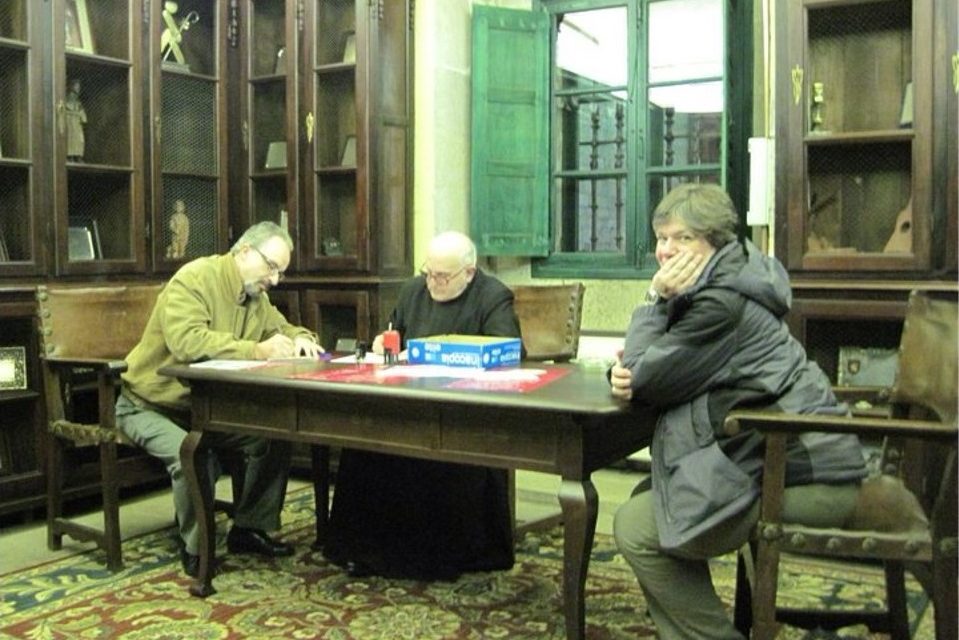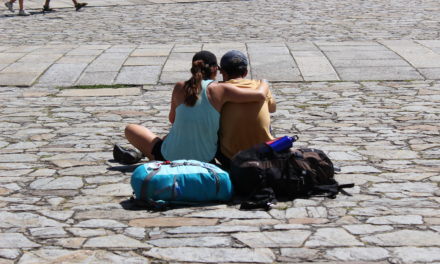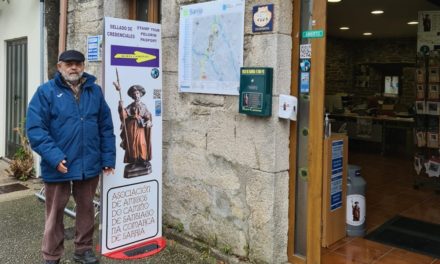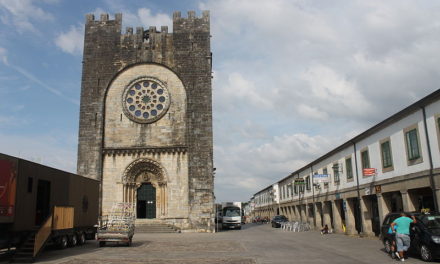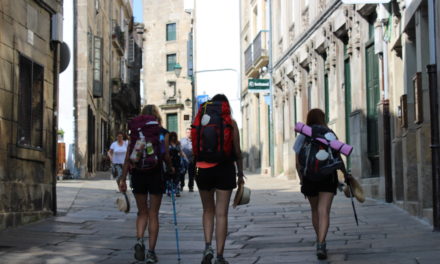When I finished my first Camino de Santiago on New Year’s Eve in 2010, I was very likely the last pilgrim to receive their Compostela that year. The pilgrims’ office was closed, the Holy Door was also closed, and the celebratory Mass to conclude the Holy Year had ended. I was ushered into the sacristy of the Cathedral where I was met by D. Jenaro Cebrián Franco. He gave me my Compostela. I remember telling him I was from New York.
In 2010, a scant 3,333 more American pilgrims received Compostelas along with me. We were 1.23% of the total number that Holy Year and 6th in line after Spain, with 69.12% of the total, followed by Germany, Italy, France, and Portugal.
2010 was a pivotal year for American pilgrims too because it marked the Spanish debut of the single most quoted reason why Americans choose to walk the Camino – the movie, The Way. Had this small film not starred a famous American actor, Martin Sheen, it might not have gotten to as many viewers as it has, but it has become somewhat of a cult classic, and the gentle story of a man hiking across Spain with the ashes of his son is proudly woven into the subconscious of many American pilgrims. It is easy to see how the number of Americans choosing to walk the Camino might increase in response to this movie.
And the number did increase, slowly at first, with 3,726 American pilgrims in 2011, the year the film opened in the United States. But the following year? 7,071 American pilgrims received Compostelas – nearly twice the number in the previous year. Eleven years later, during the second of the most recent Holy Years (2022), the number of American pilgrims had jumped to 26,014. People are still happily talking about The Way.
Then something extraordinary happened, statistically speaking, in 2023. The number of American pilgrims surpassed all countries except Spain to take second place, with 32,069 Americans receiving Compostelas. That is an increase of 23% over 2022 and nearly ten times the number recorded in 2010, the previous Holy Year.
Why was that? Why was this past year the one so many Americans chose to go on a walking pilgrimage in Spain?
The Way movie continues to inspire Americans to walk, certainly. And the circle of those who have seen and loved this movie grows. It has just recently been made available on streaming services in the US. At every meeting of my local chapter of American Pilgrims on the Camino, someone mentions The Way to the point where many Americans believe the only way to get to Santiago is by starting in St. Jean Pied de Port, as Martin Sheen did in the movie.
But there’s more to this. Americans are now mostly vaccinated against COVID-19, and in 2023, the variants that had been so devastating in the past, like Delta and Omicron, seemed to be both still evolving, yet tolerable to anyone who is vaccinated. It is easy to see why you would postpone an extended trip to Spain if you thought you were likely to be infected.
The other contributing factor is that Americans tend to plan their time off from work many months in advance. In other words, if someone gets the idea to plan their pilgrimage, it might not actually happen this year. It might be that today, they are looking to travel in September of the following year. If, as I suspect, Americans were waiting patiently for the pandemic to let up before leaving for Spain, the time out from that moment could be many months, not weeks. In a small recent survey on Facebook, several respondents mentioned that fear of contracting COVID had subsided to the point finally in 2023, where they felt safe to travel again.
This appreciation of safety goes back to the lockdown months themselves. In the spring of 2020, when so much of the world was sheltering in place, we were taught that being indoors anywhere but at home could be dangerous, and being outdoors, like taking a walk or riding a bike, was safe. The local supermarkets had special shopping hours for older people, there were directional arrows drawn on the floor so that you wouldn’t pass anyone in the aisles, and home deliveries, where a truck would pull up and the driver would leave bags outside your door became the only way to get food into the house – safely. We then disinfected everything before putting it away. The reaction to this isolation was that getting out of the house – safely – was all we wanted to do.
I started riding my bike and taking walks in the area with my neighbor. We were so starved for human interaction that we planned our walks every day. We would stop by houses where people were sitting outside. If someone were walking their dog, we would stop and talk. We developed an appreciation for the walk and the people that clearly translates into an understanding of the enormous benefits of the Camino.
Then, seeing how people loved their walks in their neighborhood, local nature preserves started expanding their hiking trails. There are two new ones just announced in the past few months in my area in Michigan. Along with the new trails are gatherings of local hikers who study native trees and native plants. Photographers are encouraged to hike and take pictures of the trails. In July, there was a local contest to see if you could hike 10-15 different trails in one month to win prizes. And with the embracing of online meetings over Zoom, the American Pilgrims on the Camino have initiated an annual virtual open house. It takes place in December, when many people are making vacation plans for the following year, and it features both American and international Camino enthusiasts who answer questions and talk about their own experience on the Camino.
Lastly, we look for a pilgrimage to take us out of our daily lives into another place, much like a spiritual retreat. When the day-to-day monotony of work, or finances, or political arguments becomes exhausting, and one more expensive beach vacation is no longer the solution, it is reasonable to see how the Camino can become a way to set your feet on a better path – in your life. The way Martin Sheen did in the movie.
I expect that Americans will continue to be a critical part of the total number of pilgrims reaching Santiago de Compostela. I am encouraged that so many Americans want to experience what has become such a critical part of my life, too.
Ultreia!
* Anne Born is a poet, editor and writer specialized in the Camino de Santiago.

